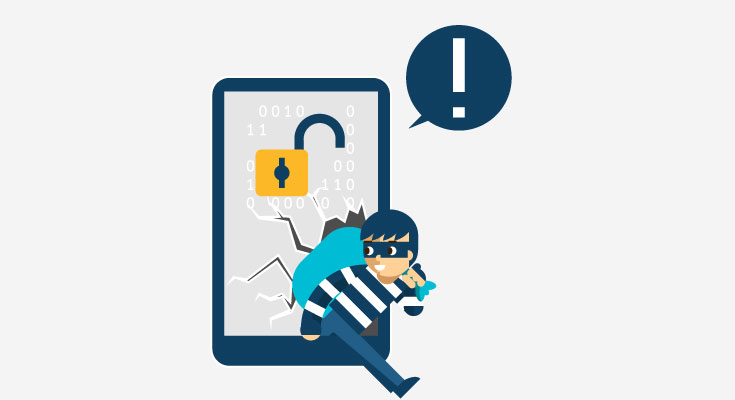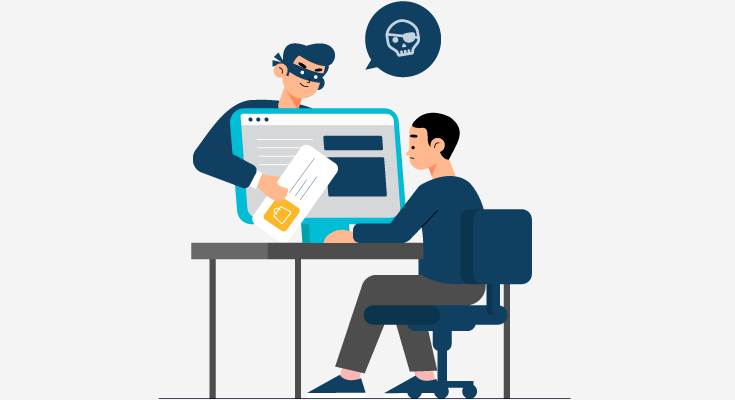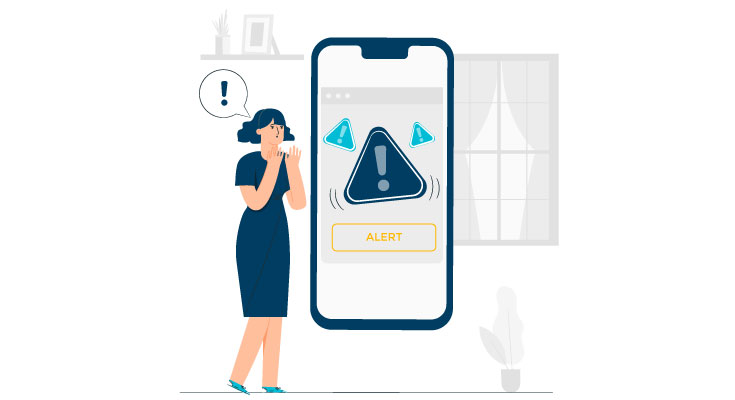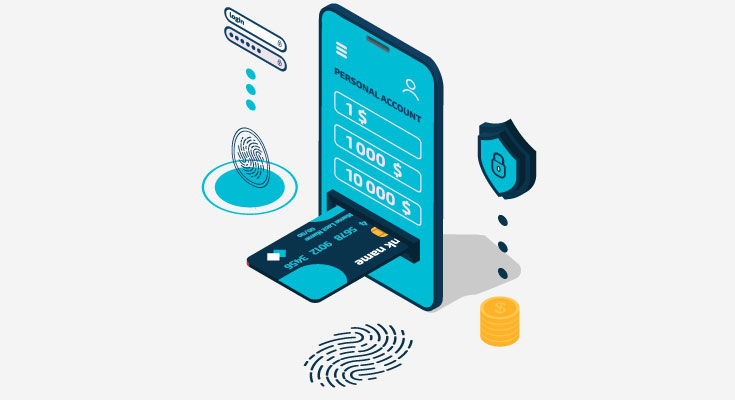With global fraud rising beyond control, it’s vital that organizations implement effective fraud prevention policies and procedures that provide security while ensuring a quality customer experience. With the best practices for fraud prevention, businesses can onboard customers quickly and seamlessly.
In the year 2019, the loss because of identity fraud in the U.S was estimated at $16.9 billion. There are more than 40 types of fraud, and businesses need to figure out which type of fraud can affect their business the most and build strategies for fraud prevention accordingly.
The threat of cybercrime is increasing, with the annual cost to the global economy from cybercrime estimated to reach $6 trillion by 2021. Countless online threats pose a significant risk of fraud for businesses. Cybercrime can also break down the internal compliance process, or it can weaken control systems that can detect illicit activities. Top fraud prevention and detection strategies can even help in picking out the best fraud prevention technologies.
Understanding the threats and the tactics used by fraudsters to create new fraud opportunities is important for the development of the best practices for fraud prevention.
Types of Online Fraud
Fraud detection is a huge problem for businesses because fraudsters are constantly innovating to keep tricking businesses. To keep up, strategies for fraud protection must also innovate to stay one step ahead.
Below are just some of the most common online fraud schemes that organizations should consider as part of their fraud prevention strategies.
1. New Account Fraud
New account fraud usually happens within 90 days of opening a new account. New account fraud is often referred to as application fraud or account origination fraud. As fraud happens so close to when the account was opened, the main purpose of the account was to commit fraud such as money laundering.
For businesses, new account fraud can be extremely dangerous as there’s no history with an existing business and no history of trust. The initial activities in the account may be small but they are often to cover future acts of fraud.
2. Card-Not-Present Fraud
With the financial industry moving towards digital transformation, card-not-present fraud is something businesses would want to keep track of. There are huge risks of CNP fraud and the merchant is liable for any of the costs incurred during the fraud.
To mitigate CNP fraud, businesses need effective fraud prevention strategies. By understanding the techniques that fraudsters use and the techniques available, you can develop and operate tactics that mitigate costs while being consumer-friendly.
Businesses should only rely on merchants that meet the Payment Card Industry Data Security Standard (PCI). The PCI is an industry-standard for payment organizations to develop standards for payment data security.
3. Identity Fraud
Identity fraud is when a person assumes the identity of another person without authorization to deceive or defraud someone.
With most of our lives going digital, fraudsters have no limit to the means of acquiring personally identifiable information (PII). Also, the constant rise in data breaches is making it easier for fraudsters to acquire information that they can use to assume identities.
The data stolen from data breaches can be brought for as low as $4 on the dark web. In upcoming years, the risk of ID fraud will grow even bigger for businesses with synthetic identity fraud.
Synthetic identity fraud (SIF) is a new and more dangerous type of ID fraud where fraudsters combine real PII with some fake ID data to create a completely new identity. One example of what comprises a fake identity is one that contains a real social security number along with fake addresses and other synthetic data points. Fraudsters can then use synthetic identities to get a driving license, credit cards, open bank accounts, and so on.
Managing FinTech Fraud: Bank-FinTech Partnerships for Better Fraud Prevention
Banks have to fight fraud from all directions and recently the situation is worsening. When a bank partners with a FinTech in a Banking-as-a-Service (BaaS) model, it mitigates risks by placing the responsibility for fraud losses onto FinTech. However, since the economics of the bank and FinTech are linked, it is in the bank’s interest to ensure that controls are in place to help FinTech partners fight fraud while protecting the bottom line.
Additionally, most frauds are financial fraud that requires assessment and sending of suspicious activity reports to the relevant regulatory bodies. This is the reason banks have to be extremely careful while choosing a FinTech to partner with. In this article, we’ll be outlining the risk a FinTech faces while detecting fraud and is there any reason how FinTechs can work together to protect their businesses.
Common Risks to FinTechs
In 2020, the number of fraud cases in that financial sector surged as more people went online for their banking needs. According to industry reports, over $1 trillion was lost globally to cybercrime in 2020. Fraudsters recently have been focusing on the FinTech industry. FinTechs are slowly changing the industry tides by developing cutting-edge technologies to detect and prevent fraud. FinTechs are extremely attractive to consumers, because of the digital environment, low entry bar, mobile-first security and so much more. These are the same reasons why FinTechs are extremely attractive fraudsters within days of launch.
FinTechs that offer financial services will have to prepare for fraud and will struggle to survive with precious capital to cover the losses. FinTechs with traditional fraud prevention methods like CDD is vulnerable to attack. As FinTechs become a vital part of the financial industry, the risks will keep growing as consumers become more and more familiar with online banking.
Type of Fraud FinTechs Go Through
With the wave of digital transformation, online fraud has grown more than anything. The most common types of fraud include phishing, synthetic ID fraud, online account takeover fraud, and digital transaction fraud.
1. Phishing
Phishing scams are extremely common, they rely on tricking individuals by unknowingly volunteering personal details or information that can then be used for creating fake bank accounts, and credit cards. Fraudsters who carry out phishing scams build a fraudulent website, a fake text impersonating a government or private entity.
2. Synthetic ID Fraud
Synthetic ID fraud is one of the biggest challenges for financial institutions as of now. To commit synthetic ID fraud, fraudsters combine real “personally identifiable information” and fake information to combine a whole new identity. Such as a legitimate social security number from people who don’t use their credit (child, homeless people, deceased individuals, or someone else), combining that real information with a fake address, phone number, or fake social media accounts. Then this synthetic ID is used to open bank accounts, apply for credit cards, and commit more illegal activities.
The first request is obviously denied, but the first application puts that fake identity into the credit reporting system, legitimizing the fake identity. The fraudsters will keep applying for credit cards, switching markets and providers with less mature identity verification processes until the fraudster finally get their hands on credit cards.
3. Account Takeover Fraud
One of the biggest challenges faced by FinTechs is Account Takeover Fraud, it costs the whole industry billions per year. Account takeover fraud and account opening fraud cause the most problems. More than 50% of businesses reported higher losses due to account opening and account takeover compared to any other type of fraud.
Account takeover fraud is a situation where a fraudster takes control of a legit business account that belongs to someone else. Account opening fraud on the other hand happens whenever a fraudster opens a new account using a fake, stolen, or synthetic ID.
4. Transaction Fraud
Transaction fraud is another common type of fraud where a stolen payment card is used to complete an illegal transaction. Since FinTechs are pretty good at completing real-time transactions, they are also at risk of running into transactional fraud. Quicker transaction times are one of the major factors that fraudsters look for in committing transactional fraud.
Transaction fraud can happen at any given time during a financial relationship. Account creation, login, and wherever money flows in and out of FinTech’s systems such as deposits, payments to merchants, withdrawals, etc.
Implementing Anti-Fraud Technologies During Account Creation
The steps for detecting and eliminating fraud should happen during all stages of a customer-business relationship. Businesses and financial institutions need to prevent bad actors from entering their systems, which can help significantly reduce fraud.
To build the perfect anti-fraud technology & strategies to reduce fraud, businesses must use a combination of identity verification and authentication methods to deliver the ideal level of risk protection. Here are some of the most common fraud-prevention methods:
1. Identity Verification
Before a new account is opened, Identity verification technologies and procedures can detect potential fraudsters and prevent future damages. Anomalies in a person’s identity documents such as out-of-date information, mismatched data, and even the smallest red flags demand further examination. By cross-referencing multiple data points and data sources for ID checks, financial institutions can create stronger barriers for fraudsters.
While ID verification is extremely important, it shouldn’t create friction for legitimate customers. Finding the balance between a secure ID verification process and a positive customer experience is something financial institutions have to do.
2. Biometric Authentication
Biometric authentication is another huge part of fraud detection and prevention for financial institutions. Biometric authentication authenticates a person by distinguishing biological traits to uniquely identify a person. Combining online document verification with biometric authentication provides multi-fold authentication for financial institutions. If done properly, this can help eliminate fraud while successfully maintaining a positive customer experience.
3. MobileID Checks
Smartphones can help financial institutions prevent fraud by collecting a significant amount of ID data, including name, mobile number, address, and device information. To make a proper image of customer identity, this data can be cross-referenced with other ID data points. Mobile ID data can help financial institutions authenticate the individual, and the data collected can also help in finding potential future risks.
Collaborating With Banks for Better Fraud Prevention
As the fraudulent landscape becomes increasingly more complex, it becomes tough for banks and FinTechs to detect suspicious transactions and prevent illegal activities. Fraud prevention solutions that leverage data learning and machine learning can help FinTechs better safeguard themselves and detect fraudulent actions.
By collaborating with banks, FinTechs can take a better approach to financial fraud prevention. Banks can bring their expertise to comply with ever-changing KYC, KYB, and AML regulations. Whereas, FinTechs can play their part and bring in much-needed technological expertise. Financial technologies such as online document verification software, online bank account verification software, and utility bill verification software tend to enhance the overall fraud detection and prevention programs. With a proper collaborative approach, FinTechs and banks (or other financial institutions) can fulfill the need for digital transformation, while ensuring a positive customer experience and preventing fraud.
Fraud Prevention Technologies for Financial Institutions
Businesses can build as many best practices for fraud prevention as they want, but without the help of the right technologies, fraudsters will find a way to sneak into the systems. By integrating technologies into the fraud prevention workflow, financial institutions can eliminate most of the major risks of fraud.
DIRO’s online document verification service helps businesses with proof of address verification, bank account ownership verification and so much more to eliminate fraud. DIRO verifies over 7,000 document types from all over the globe instantly and provides stronger proof of authentication. By integrating DIRO into the workflow, businesses can successfully comply with AML and KYC regulations while ensuring a positive customer experience.














